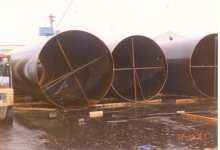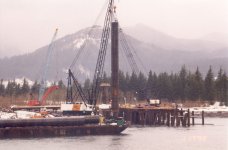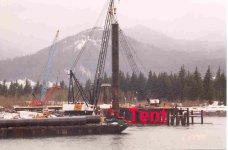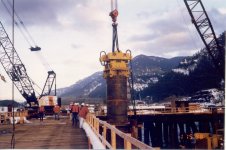As I mentioned earlier in this thread, the float type flow gauges have a tapered tube - inside that tube is a CALIBRATED weight (some are just a "BB", but the weight and SHAPE, along with the taper of the tube, are what determine what the reading will be at any given flow. Those factors are chosen during design, along with the RANGE of flows for the particular application.
Float type flow meters will ONLY WORK ACCURATELY if the gas (or liquid) being measured is the SAME SPECIFIC GRAVITY that meter was designed for, because a HEAVIER gas/liquid will cause the float to rise higher in the tube at any given flow rate than a LIGHTER gas/liquid.
In actual practice, C25 gas (which is 75% Argon) is close enough to the same molecular weight as pure Argon not to change the reading by much - but pure CO2 is enough different to change the reading noticeably.
The dual scale on some float type gauges is there to compensate for different weight gases and is workable for welding purposes, but would NOT be used anywhere an EXACT reading was needed.
Bottom line - EITHER type gauge will be "close enough" for this purpose. The ONLY time the float type is better is if you get a blockage in your gas delivery system AFTER the gauge - under THOSE conditions, the needle gauge will LIE TO YOU, because it's only reading PRESSURE that's set by the regulator. You can see this for yourself if you have the needle type - squeeze the trigger on your MIG torch and set flow to 20 CFH, then RELEASE the trigger - your "flow" gauge will read MORE "flow" than it did while you were setting it. (Even though there's NO FLOW AT ALL when you're not welding)
This is because that type gauge is NOT reading FLOW, it's only reading the PRESSURE DROP across your entire "delivery system", including hoses and torch. If you were to disconnect the hose right where it comes out of the gauge, that gauge would read a LOT LESS and be flowing a LOT MORE gas, because that needle type gauge is NOT READING FLOW AT ALL.
If you were to do that SAME experiment with a FLOAT type flow gauge, the "BB" would be slammed against the TOP of the tube, because REAL FLOW is the ONLY thing a float will measure.
Pro's and cons - the float type flow meters will probably be more accurate, more useful in troubleshooting if you're having gas problems, BUT are more susceptible to damage if bumped - The needle type are OK for most usage, NOT quite as delicate, but WILL LIE to you under line blockage conditions.
Sorry this got so long-winded, I spent the last 35 years of my "indentured servitude" trying to explain to management why there are places where that $17 flow meter can NOT replace the $1700 one I spec'd (not exagerating)... Steve



